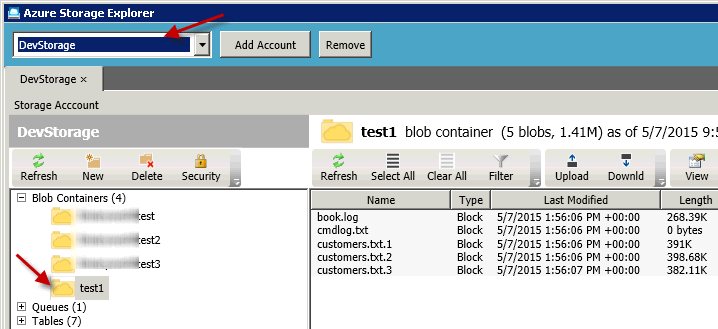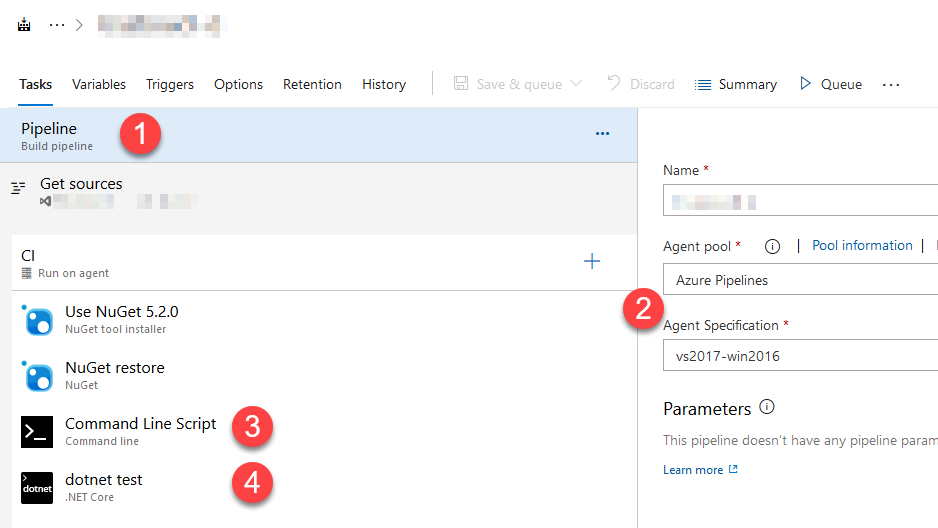


In an empty folder run func init and select dotnet as the runtime.You can try all this out very easily if you have the Azure Functions Core Tools installed. But I find that often I'm using storage emulator for a quick throwaway experiment, and so it's nice to be able to easily clean up once I'm done. I could do that by adding another parameter of -v c:/azurite:/data, which would allow my the contents of my emulated storage account to persist independently of the lifetime of the container. Note that in this example I'm not mounting a volume. Note that I've included port 10002 which is the port used by table storage, which is now supported by Azurite, and necessary for Durable Functions.
MICROSOFT AZURE STORAGE EMULATOR INSTALL
There are several ways you can install and run Azurite including a VS Code extension or just with a simple npm install -g azurite.īut I wanted to try it out as a container, so I started it with the following command. Fortunately it appears to be good enough already to support local development of Durable Functions (and apparently Logic Apps too). You can check up in this issue to find out if it has gone GA yet. The good news is that there is now preview support for Table storage in Azurite. In particular, Azurite did not support Table Storage until recently, making it unsuitable for use with Durable Functions.

However, until recently Azurite has been lacking a few important features that make it suitable to fully replace the older storage emulator. Azurite will continue to be updated to support the latest versions of Azure Storage APIs. Azurite supersedes the Azure Storage Emulator. The official documentation states:Īzurite is the future storage emulator platform. More recently Azurite, which is cross platform, and open source has emerged as the successor to the old Windows-only storage emulator. This is especially valuable if you are developing Durable Functions because they make use of a wide range of Azure Storage features including blobs, queues and table storage in order to implement task hubs. This is great as it saves you from having to create a real Azure Storage account whenever you want to experiment with Azure Functions. You may know that for many years there has been an Azure Storage Emulator that can be used for local development of Azure Functions on Windows. Navigate to SETTINGS > Access keys in your storage account's menu blade to see connection strings for both primary and secondary access keys.In this post I want to show how you can use the cross-platform Azurite Azure Storage emulator running as a Docker container to develop Durable Functions locally. You can find your storage account's connection strings in the Azure portal. Where is Azure storage connection string? You can also perform OData-based queries and use JSON to serialize data. Table Storage allows you to create massively-scalable apps that require a flexible data schema. You can map your own domain or subdomain to the Blob service for your storage account so that users can reach it using the custom domain or subdomain.Īlso know, what kind of a NoSQL store is Azure table storage?Īzure Table Storage is a NoSQL key-value store using massive semi-structured datasets. Likewise, what URL format can blobs be accessed from? By default, the URL for accessing the Blob service in a storage account is. Blob storage is ideal for: Serving images or documents directly to a browser. Blob storage is optimized for storing massive amounts of unstructured data, such as text or binary data.

You can test your application against the storage services locally without creating an Azure subscription or incurring any costs.Īzure Blob storage is Microsoft's object storage solution for the cloud. The Microsoft Azure storage emulator is a tool that emulates the Azure Blob, Queue, and Table services for local development purposes.


 0 kommentar(er)
0 kommentar(er)
